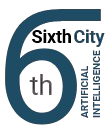AI Change-Management Workshops That Build Trust and Team Buy-In
It starts with a whisper—and a worry too familiar to ignore.”
Someplace, somewhere in the last week, a person, let's call her Marie, she's a payroll clerk at a Midwest manufacturer, pulled aside an AI consultant after a kickoff meeting and said something like: “I’m 59,” spoken in a whisper. “If this AI thing does my spreadsheets, why keep me?”
That sentence is the enemy of innovation—not because Marie is wrong to worry, but because her worry is silent.
Our AI change management workshops start with fear—not code. Before we show a single line of code, we run empathy interviews. Each participant answers three questions on sticky notes:
-
What part of your job feels repetitive?
-
What skill makes you proud?
-
What scares you about automation?
The sticky-note wall gets messy fast: “Data entry all day.” “I’m great at calming angry customers.” “I don’t want to train a bot that replaces me.” When people see their own anxieties mirrored by colleagues, shoulders drop and real talk begins.
Next comes the myth-busting demo. We take a boring, time-sucking task -- usually drafting a confirmation email -- write a prompt together, and watch ChatGPT spit out a draft. We then spend five minutes critiquing tone, adding inside jokes, and fixing a typo or two. The point is obvious: the human editor still drives quality.
The Agent-Boss relay race
The room splits into teams. Each team receives a short workflow (refund request, inventory reorder, HR policy update). They must:
-
Draft a prompt.
-
Edit the output.
-
Decide when to escalate to a human lead.
It’s loud, messy, and weirdly fun. By the end, the phrase “Agent-Boss” feels natural—staff are no longer “users” but coaches directing an eager intern.
Personal time audits
In the afternoon we hand out simple worksheets: list yesterday’s tasks in 15-minute increments, circle anything that felt like busywork, and star anything creative. Most folks discover 30-40 percent of their day is prime for automation. That realization reframes AI from “threat” to “time-credit machine.”
Results we measure
-
Engagement scores up 14 % three months post-workshop.
-
Automation ideas submitted by frontline staff jump 3-fold.
-
Voluntary turnover dips, even in tight labor markets.
If done right, our fictitious employee, Marie; what happens to her? She now trains the payroll bot, tweaks prompts when tax tables update, and mentors younger staff on interpreting anomaly flags. Instead of fearing the pink slip, Marie became the go-to AI guide—and found extra time for life. Win-win.
If your crew is whispering the same question Marie asked, bring them into the conversation. Let them shape the prompts. Empower them to boss the bots. Fear shrinks when curiosity walks in.

